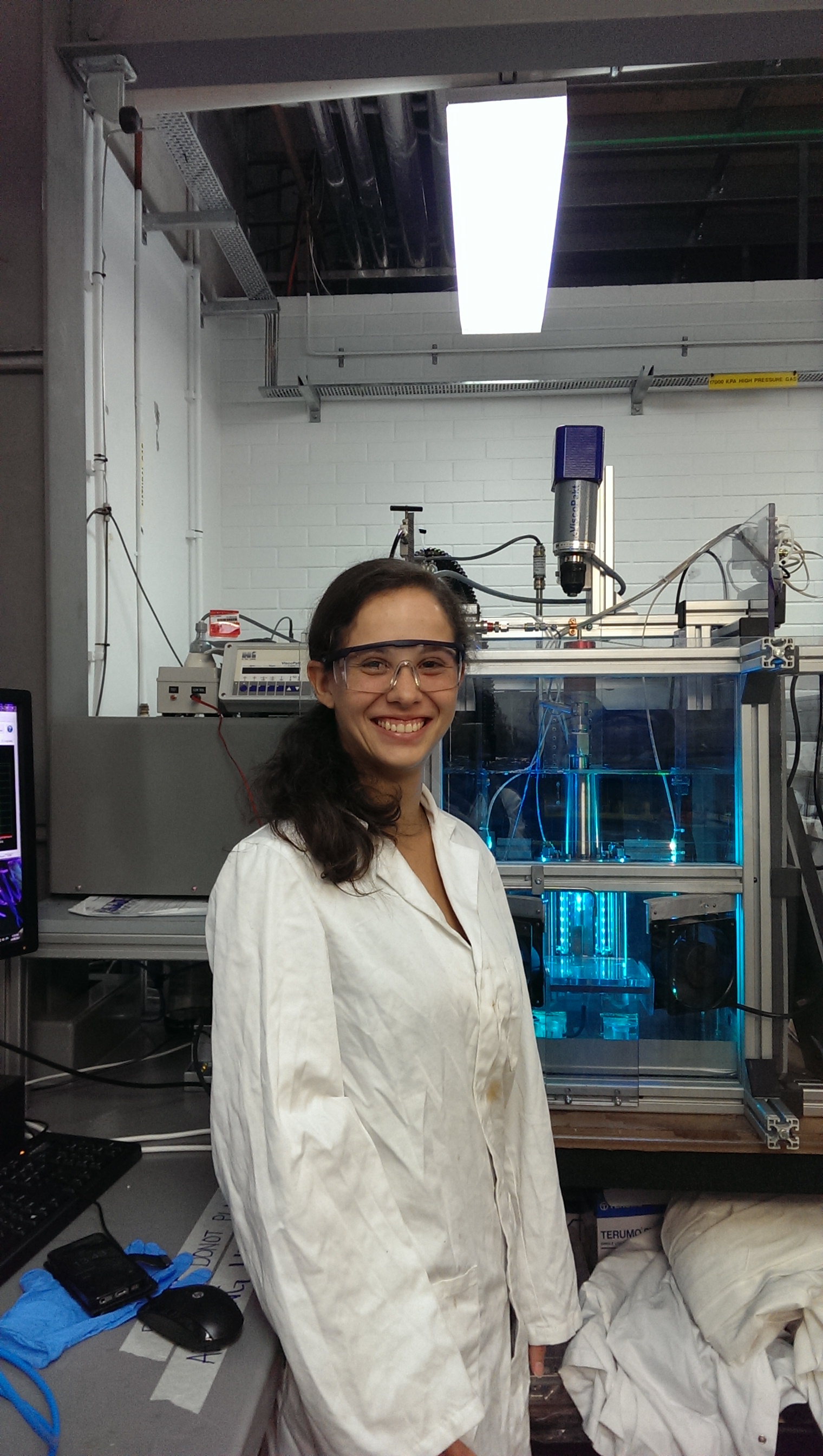
Nathali Schmid, Student of the Month, August 2017

C-IMAGE is developing computer models to estimate the fate and concentration of oil. But a major factor of predicting this accurately is knowing what the droplet size distribution was at the well head in a high pressure environment. Tasks 1 & 2 are working together to integrate high-pressure experiments and computer models to provide first responders an accurate estimate of where oil is going.
Nathali Schmid, a M.S. student from the Hamburg Univeristy of Technology (TUHH) recently traveled to the University of Western Australia as part of a student exchange program. Working with Dr. Zachary Aman, Nathali is learning new ways to answer the same question, ‘what size are the droplets coming from deep sea well during oil spills?’
How has your experience been traveling to Perth and the University of Western Australia in the student exchange program?
During the ‘2nd Symposium on Deep-Sea Oil Spills’ at Hamburg University of Technology (TUHH) in September 2016, I met Prof. Zach Aman for the first time and that is where we figured out a concept for a collaboration. I started to prepare some experiments without even knowing if I will actually be going to Perth. By the time everything was fixed I got really excited.
I have got relatives in Perth which were very welcoming and made Perth feel like home to me immediately.
My first visit to UWA was super impressive as well. The campus with it’s relaxed atmosphere is right next to the beautiful swan river where I enjoy my lunch every now and then.
What path did you take to reach your studies now at TUHH? Bachelors degree, internship experience, working experience?
I started my Bachelor of Science degree in 2011 in ‘Energy- and Environmental Engineering’ at TUHH. During that time I worked for different Institutes at the University and did an internship in a process engineering company as well. All these experiences helped me to decide to change the major for my master studies to ‘Process Engineering’.
What initially interested you in working at TUHH with the Institute of Multiphase Flows?
In my second undergraduate year ‘Introduction to Fluid Dynamics’ was one of the obligatory subjects held by Prof. Schlüter, head of the Institute of Multiphase Flows (IMS). He made a very good job in teaching it to us students but as I’m pretty much a practice related person it was still quite hard for me to get. That is when I decided to write my bachelor’s thesis at IMS. The experimental work on vortex formation in reactor coolant systems was interesting and super helpful to actually understand the theory behind it.
That was also the time I met Simeon Pesch, nowadays the PhD student working on the C-IMAGE project. He got me interested in that multifaceted topic and that is why I kept working at IMS.
What is the focus of your research? How will your findings contribute to the overall understanding of oil spills or oil spill response?
My research is focused on the oil droplet size distribution of oil in water systems. Back in Germany I collected data of oil droplet sizes in a jet under different conditions. At UWA I am about to run experiments on a high pressure autoclave. These two completely different setups will hopefully lead to similar results concerning the droplet sizes in relation to the energy input.

This work is supposed to be another step in the direction of deriving a model to describe the droplet size distribution not depending on the surroundings but on the physical and hydrodynamic properties only.
What research tasks are you completing this week (or during your time abroad)?
At the moment I am preparing the High-Pressure Sapphire Autoclave Cell at UWA and some oil samples to start running experiments next week. I’m going to measure the oil droplet sizes in relation to the energy dissipation rate under different conditions and will then compare these results with the data I generated at TUHH in a jet setup.
Which of your findings or experiences so far have been most eye-opening? Were there any moments or facts that just made you say “Wow! I did not expect that.”?
Unfortunately, my research has not provided any reportable results yet but I am looking forward to next week when I get to analyse the results of my experiments as we do have a certain outcome in mind and are hoping that the experiments will display what we figured out in theory.
Why do you study high-pressure systems? What inspires you to continue to ask questions about oil, droplet sizes, and the deep sea?
The reason why I initially started working on that project at TUHH was the fluid dynamic aspect combined with the idea of protecting or reducing the damage to the environment in case of future oil spill accidents.
During the ‘2nd Symposium on Deep-Sea Oil Spills’ I got a lasting impression on the great effort people all over the world were expending on their research to share and combine their knowledge and results. It is really impressive to see how all the different fields of research come to work together on that oil spill subject.
I am happy to do my part for the C-IMAGE project and hope that my work might help to move ahead.


